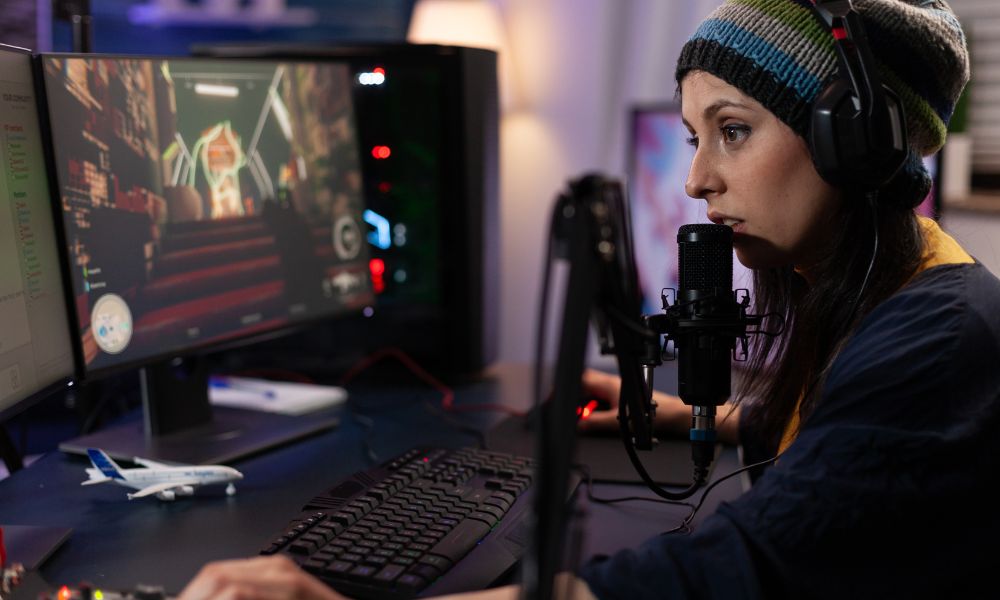
Gaming has evolved from a subculture activity to one of the world’s top entertainment industries, and its backbone are the makers that shape how millions play, view, and buy. Gaming influencers these days are not just entertainers; they’re community leaders, cultural tastemakers, and brand ambassadors with influence that rivals even many mainstream celebrities.
From live Twitch streams to YouTube game review videos and TikTok content, these influencers have audiences that are action-ready, loyal, and interactive. They are both authentic and live, engaging with audiences in real-time, which is a valuable asset for brands that want to reach technically adept Gen Z and millennial buyers.
By 2025, the lines between gamer and influencer will have disappeared. Unfurling new product categories, monetizing esports, and creating mainstream awareness, gaming influencers are now setting digital culture, and redefining the dictionary on influence.
Why Gaming Influencers Matter More Than Ever
Gaming is no longer a subculture, it’s the entertainment mainstream. What once lived on niche forums now dominates global platforms like Twitch, YouTube, and TikTok, where streamers pull in audiences larger than prime-time television. In fact, gaming viewership hours have surpassed traditional TV consumption among younger demographics, redefining how people spend their screen time.
But numbers alone don’t explain the phenomenon. Gaming influencers thrive because they’ve built something brands have struggled to capture for years — trust. These creators don’t just show products; they live them, integrating them seamlessly into content that feels real, not rehearsed. Their audiences respond in kind, forming tight-knit communities where engagement is active, not passive.
What makes gaming influencers particularly valuable is their cross-industry appeal. They’re not limited to game developers or console makers, lifestyle, fashion, food, and even financial brands are finding creative ways to tap into their loyal, tech-savvy audiences. Whether it’s a sponsored stream, co-branded merchandise, or in-game activation, gaming influencers have become the bridge between brands and one of the most engaged digital audiences in the world.
If you’re a brand owner, or you’re planning to promote a new product or service, have you considered using influencer marketing tools? With Hypefy’s Influencer Discovery Tool, or Influencer Hiring Platform, you’ll find everything you need to connect with verified creators. Both tools make it seamless to manage collaborations, and launch successful campaigns that truly deliver results.
Top 10 Gaming Influencers in 2025/2026
The gaming creator landscape is a mix of legacy powerhouses and new-age innovators. These influencers command communities that don’t just watch, but participate. Below are ten of the most impactful gaming creators in 2025/2026, each shaping the industry in a distinct way.
1. Ninja (Tyler Blevins)
Platform(s): Twitch / YouTube / TikTok
Niche: Fortnite, Esports, Streaming Culture
Why They Stand Out / Brand Potential: Global name recognition, cross-platform presence, proven sponsorship ROI.
Description: A pioneer in mainstream gaming influence, Ninja remains one of the most recognizable figures in online entertainment. Known for his Fortnite gameplay and high-energy personality, he’s built partnerships with major brands like Adidas, Red Bull, and Samsung. His versatility across live and short-form content makes him a benchmark for brands seeking wide, multi-platform visibility.
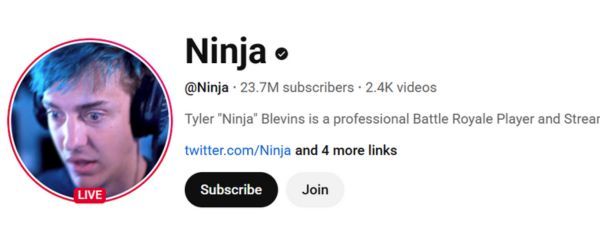
2. Pokimane (Imane Anys)
Platform(s): Twitch / YouTube
Niche: Variety Gaming + Lifestyle
Why They Stand Out / Brand Potential: Strong female representation, authentic audience connection, brand safety.
Description: Pokimane represents the evolving face of gaming influence, one rooted in community, inclusivity, and relatability. Her balance between gaming and lifestyle content allows her to engage both dedicated gamers and mainstream audiences. She’s a consistent choice for brands that prioritize authenticity and long-term trust.

3. Jacksepticeye (Seán McLoughlin)
Platform(s): YouTube / TikTok
Niche: Entertainment Gaming
Why They Stand Out / Brand Potential: Positive persona, philanthropy ties, high CPM engagement.
Description: Jacksepticeye’s vibrant personality and engaging storytelling have made him one of YouTube’s most beloved creators. Beyond gaming, his involvement in charity events and mental health advocacy has deepened his reputation for positivity, a key factor for brands looking to align with values-driven creators.
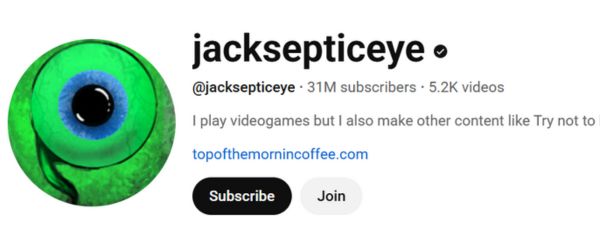
4. PewDiePie (Felix Kjellberg)
Platform(s): YouTube
Niche: Commentary + Gaming Legacy
Why They Stand Out / Brand Potential: Veteran creator with global reach and cultural impact.
Description: PewDiePie remains one of the most influential figures in internet history. Although he’s diversified away from pure gaming, his legacy audience continues to drive millions of views. For brands, his enduring name recognition and credibility make him an evergreen presence in influencer marketing discussions.
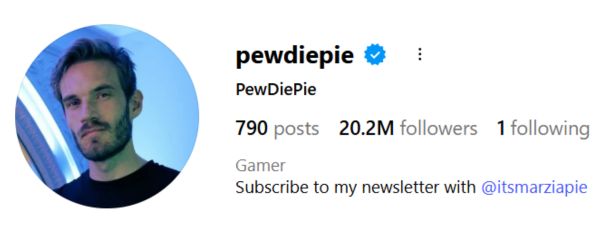
5. Valkyrae (Rachel Hofstetter)
Platform(s): YouTube / Twitch
Niche: Gaming + Entrepreneurship
Why They Stand Out / Brand Potential: Co-owner of 100 Thieves, trendsetter for inclusive gaming content.
Description: Valkyrae’s dual identity as a top-tier creator and business leader has reshaped how female gamers are represented in the industry. Her entrepreneurial role with 100 Thieves and her polished yet relatable content make her a valuable long-term partner for brands targeting gaming and lifestyle audiences alike.
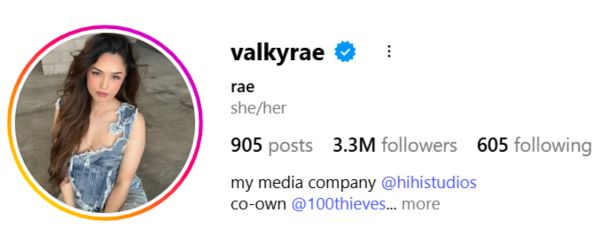
6. xQc (Félix Lengyel)
Platform(s): Twitch
Niche: Variety + Competitive Gaming
Why They Stand Out / Brand Potential: Massive live audiences, unmatched real-time engagement, high cultural influence.
Description: Known for his energetic personality and unpredictable streaming moments, xQc dominates Twitch’s live category. His influence extends beyond gaming into internet culture, memes, and live commentary. While not every brand fits his style, those that do gain access to some of the most dedicated real-time audiences online.

7. TimTheTatman
Platform(s): YouTube / Twitch
Niche: Esports + Community Gaming
Why They Stand Out / Brand Potential: Loyal fanbase, authentic personality, trusted by major sponsors.
Description: TimTheTatman’s approachable tone and long-standing community make him a model for sustainable influencer growth. His partnerships with brands like AT&T and Oakley demonstrate how genuine personality can drive sponsorship success without compromising audience trust.
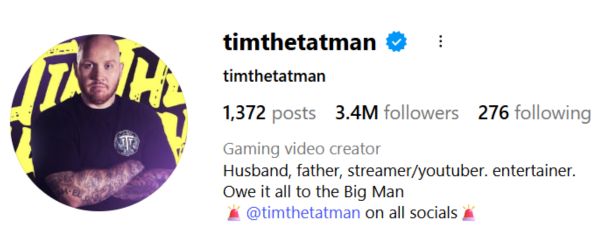
8. Sykkuno
Platform(s): Twitch / YouTube
Niche: Cozy Streaming + Collaborations
Why They Stand Out / Brand Potential: Wholesome tone, inclusive community, high brand safety.
Description: Sykkuno has built a reputation for warmth and calm energy in a high-intensity industry. His collaborative streams and community-driven approach attract both gaming and lifestyle audiences. For brands, he represents the growing demand for creators who can deliver reach without controversy.

9. IShowSpeed
Platform(s): YouTube Live / TikTok
Niche: High-Energy Gaming + Pop Culture
Why They Stand Out / Brand Potential: Massive Gen Z reach, viral content creation, cultural momentum.
Description: IShowSpeed is one of the most talked-about creators of his generation. His mix of gaming, humor, and high-energy streaming resonates strongly with younger audiences. While his bold personality may require brand alignment consideration, his cultural impact and viral potential are unmatched in 2025.

10. Ludwig Ahgren
Platform(s): YouTube / Twitch
Niche: Game Events + Entertainment Content
Why They Stand Out / Brand Potential: Data-driven production style, large-scale event expertise, professional brand fit.
Description: Ludwig combines creator charisma with production sophistication. Known for marathon streams and innovative event formats, he approaches content like a studio producer. His professionalism and data-backed approach to sponsorships make him one of the most reliable creators for structured brand collaborations.
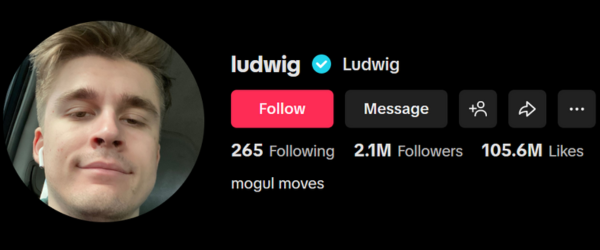
Together, these ten creators showcase the range of modern gaming influence, from community-centered streamers to global household names. They prove that influence in gaming isn’t just about skill or fame, it’s about connection, consistency, and credibility.
The Revenue Streams: How Gaming Influencers Actually Make Money
Behind every viral clip or marathon stream lies a complex business model. Gaming influencers don’t rely on a single source of income, they diversify across multiple revenue channels to stay sustainable, profitable, and independent. Understanding how these streams work helps brands structure fair partnerships and spot genuine opportunities for collaboration.
1) The platform payout: Demystifying Twitch subs, ads, and YouTube partner programs
For most creators, platform monetization is the foundation.
On Twitch, income comes primarily from paid subscriptions, Bits (micro-tips from viewers), and ad revenue. A Twitch Partner or Affiliate earns a cut from each subscriber tier, often supplemented by mid-roll ads during streams. The top tier of streamers can make six figures monthly, but earnings fluctuate with audience loyalty and live consistency.
YouTube operates differently, rewarding creators through the Partner Program. Monetization depends on watch time, CPM (cost per thousand impressions), and ad suitability. Gaming videos, especially long-form Let’s Plays or reviews, tend to generate strong ad performance thanks to high viewer retention. Many creators also monetize through YouTube Premium revenue and channel memberships.
The platform economy rewards consistency, audience retention, and diversification, which is why successful creators rarely rely on a single income stream.
2) Sponsorships & brand deals: The lifeblood of the professional creator
While ads and subscriptions cover the basics, brand partnerships are where real scalability begins.
Gaming influencers collaborate with brands across hardware, software, lifestyle, and even food and beverage sectors. These deals range from sponsored streams and product placements to affiliate programs that track conversions through custom links or promo codes.
Top influencers like Ninja, Valkyrae, or TimTheTatman have long-term sponsorships structured more like athlete endorsements, complete with exclusivity clauses, co-branded merch, and performance bonuses. For mid-tier creators, short-term integrations or discount-code campaigns provide predictable revenue and open the door to repeat collaborations.
For brands, the takeaway is clear: influencer sponsorships work best when the creator has creative freedom and alignment with the product. Audiences can tell the difference between a genuine recommendation and a forced read.
3) Merch, donations, and Patreon – Leveraging community support directly
Community monetization is where influence transforms into long-term stability.
Most gaming influencers build merch lines that extend their personal brand, from apparel to themed collectibles. Others rely on Patreon or Ko-fi, where fans subscribe for exclusive content, early access, or behind-the-scenes updates.
Donations also remain a vital income stream, especially on live platforms. Viewers contribute during streams as a form of direct appreciation, often tied to real-time interactions like shoutouts or on-screen alerts.
This direct support model not only strengthens financial independence but also deepens audience connection. For brands, working with creators who have strong community backing often means tapping into audiences that are emotionally invested and highly responsive.
Platform Breakdown: Where Gaming Influencers Thrive
Gaming content has become one of the most dynamic ecosystems across social media, and each platform offers unique advantages, from long-form storytelling to fast-paced community interaction. Understanding how and why gaming influencers choose specific platforms helps brands match their campaigns with the right format, audience, and tone.
Twitch: Live community interaction and audience loyalty
Twitch remains the heartbeat of live gaming culture. Streamers build deep, loyal communities where engagement unfolds in real time through chat interactions, reactions, and donations.
For brands, this immediacy is gold. Sponsorships feel native, whether it’s an on-screen overlay, live product demo, or branded challenge, because audiences are part of the experience, not passive viewers.
The key to success on Twitch is authenticity. Audiences reward transparency and consistency, so brands that allow streamers creative freedom typically see higher sentiment and engagement.
YouTube Gaming: Longevity and search-driven visibility
YouTube Gaming offers a different kind of influence: evergreen reach. Long-form gameplay videos, reviews, and tutorials can drive traffic months or even years after upload, thanks to YouTube’s recommendation and search algorithms.
For brands, this platform works best for campaigns that prioritize discovery and ongoing relevance. Sponsored integrations within gameplay videos or dedicated product showcases can continue to deliver impressions long after the initial post date.
YouTube also enables creators to diversify content styles, from cinematic storytelling to bite-sized Shorts, giving brands multiple options for collaboration and cross-format exposure.
TikTok Gaming: Short-form reach and trend acceleration
TikTok has redefined how gaming moments go viral. What used to be a highlight reel now becomes a trend in seconds, with creators remixing, reacting, or storytelling through fast-paced edits.
Gaming influencers on TikTok excel at making complex topics simple and visually engaging, often reaching non-gamer audiences in the process. For brands, this means access to massive reach and younger demographics, ideal for awareness or product teaser campaigns.
TikTok’s rapid trend cycles reward agility. Brands that respond quickly, co-create with influencers, and leverage trending sounds or hashtags can achieve visibility that traditional ads can’t match.
Discord & Kick: Emerging micro-community spaces
While smaller in audience compared to Twitch or YouTube, platforms like Discord and Kick are shaping the next stage of creator-fan relationships.
Discord serves as a private community hub where creators can build deeper engagement beyond streams, perfect for exclusive brand activations, beta testing, or event-based promotions.
Kick, a newer player, is attracting streamers with higher revenue splits and looser content rules. For brands, it’s an experimental space offering early mover advantage and opportunities to reach audiences tired of mainstream platform constraints.
Each platform reflects a different mode of connection, Twitch builds trust in real time, YouTube delivers sustained visibility, TikTok drives viral momentum, and Discord fosters intimacy. Successful influencer campaigns rarely depend on just one platform; they integrate all four strategically to balance reach, authenticity, and longevity.
The Future of the Game: What’s Next for Gaming Influencers?
The creator economy never stands still, and gaming sits at the front line of that evolution. As audiences fragment across new platforms and technologies, the next wave of gaming influencers will look very different, blending real-time interactivity, AI-driven creativity, and virtual identity into a single ecosystem.
The rise of virtual streamers (VTubers) – avatar-based anonymity and global appeal
Virtual influencers aren’t new, but VTubers have transformed the idea into a full-scale industry. Using motion capture and 3D avatars, creators like Ironmouse and Kuzuha build massive audiences without ever revealing their real faces.
For brands, VTubers offer something unique, limitless creative control and instant localization potential. A virtual avatar can align with brand aesthetics, speak multiple languages, and appear in multiple campaigns simultaneously. In 2025, expect more collaborations blending human and virtual creators in hybrid influencer campaigns.
AI co-pilots – how generative AI is changing content creation workflows
AI is no longer a behind-the-scenes tool; it’s becoming part of the creative process. Influencers are using AI to generate thumbnails, scripts, highlight clips, and even interactive chatbots that engage audiences during live streams.
For gaming creators, this automation unlocks efficiency, allowing them to produce more content without burning out. For brands, it means faster campaign delivery and data-rich personalization. Expect AI to play an increasing role in campaign ideation, creative testing, and audience segmentation, making influencer marketing more measurable and scalable.
The platform wars – will Kick, YouTube, or Twitch reign supreme?
The competition among major streaming platforms is intensifying.
Twitch still leads in live interactivity, but creators are drawn to YouTube for its stability, discoverability, and long-term monetization. Meanwhile, Kick is positioning itself as the creator-friendly disruptor, offering higher revenue shares and relaxed policies.
For brands, this means diversification is essential. Instead of betting on one platform, marketers are spreading budgets across several ecosystems to maintain reach and adaptability. The winners of this next phase will be the brands and creators that stay agile, experimenting early and tracking performance closely.
Gaming influencers aren’t just shaping the future of entertainment; they’re redefining digital storytelling itself. As virtual identities, AI collaboration, and platform competition evolve, influence will depend less on follower counts and more on innovation, interactivity, and the ability to build communities that last beyond the algorithm.
Key Takeaway: From Gameplay to Successful Influencers
Gaming influencers have evolved far beyond simple entertainment. They’ve become full-scale media entities, combining storytelling, community building, and data-driven strategy. The creators who succeed today are those who treat their content like a brand, their audience like a partner, and their creativity like a business.
For brands, gaming influencers represent more than visibility; they offer credibility, authenticity, and measurable impact. Whether through Twitch streams, YouTube collaborations, or TikTok trends, partnerships built on trust and shared audience values deliver results that traditional ads can’t match.
As gaming continues to lead culture in 2025, one thing is clear: influence in this space isn’t just about playing the game, it’s about changing it.
Related Articles to Read
If you’re exploring influencer opportunities across different industries, these resources can help refine your next campaign strategy:



